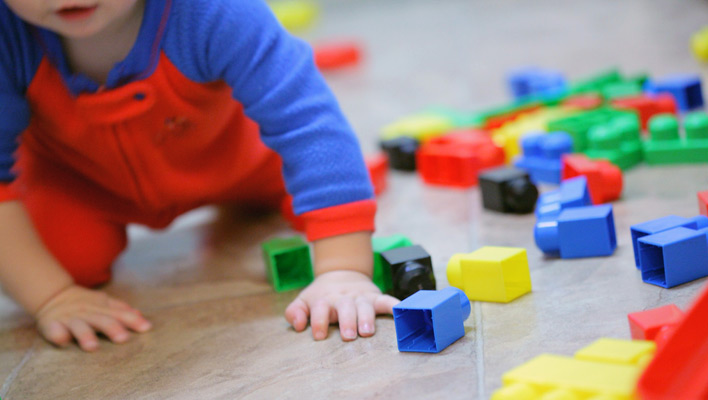Kids do the darndest things—especially the little ones. From the moment they learn to crawl, they seem to have the uncanny knack to zero in on the one circumstance in their environment that presents a hazard to life and limb—even if they have to pass, undistracted, through dozens of shiny new toys to reach it.
While we don’t like to think of our saltwater aquariums as potential danger zones, there’s no getting around the fact that they present a variety of potential perils to curious youngsters who are understandably drawn to their beauty.
So, if any of you salties out there have a little crawler in the house (Chris, I’m looking in your direction!)—or, worse, one that has just gone upright and bipedal—it might be time to give your aquarium a safety assessment and do a little childproofing.
Here are some tips to help get you started:
Stabilize the tank
Make sure the tank is leveled properly and that both the aquarium stand and the underlying floor are sturdy and stable so there’s no risk of the tank toppling over with a little pushing or pulling.
Eliminate electrical hazards
Water and electricity are a deadly combination, yet marine aquarium hobbyists have little choice but to put the two in close proximity. To prevent little explorers from making a shocking discovery, you should:
- Plug all your electronic aquarium devices into a GFCI (ground fault circuit interrupter) outlet or adapter, which will immediately trip the circuit and prevent electrocution if an imbalance is detected between the hot and neutral wires.
- Secure or hide dangling power cords to 1) make it harder for your child to tug on them and 2) eliminate a possible strangulation hazard. Either direct the cords behind the tank and stand, where they’ll be out of sight (and hopefully out of mind), or fasten them to the stand, an adjacent wall, or another surface.
- Place external pumps, light ballasts, and other free-standing electronic devices well out of reach or barrier them off.
Stow the chemicals
Test kit reagents, calcium supplements, buffering agents, medications, and water conditioners are just a sampling of the chemicals marine aquarists might have on hand at any given time. When not in use, be sure to keep these and other aquarium chemicals safely locked away just as you would any chemicals used in your kitchen, laundry room, bathroom, or garage.
Be careful with buckets and tubs
Believe it or not, that five-gallon bucket you’ve been using to mix up salt water can present a drowning hazard to a young child. Owing to the shape, smooth sides, and stability of these buckets, a curious toddler peeking in can easily fall in head first and may then be unable to get out. Plastic storage bins and trash cans used for storing salt water are also potential drowning risks. Any time you’re not in the immediate vicinity, any such vessel should be kept either empty or tightly covered and out of the child’s reach.
Secure the sump
Sumps should be kept off limits to young children for several reasons:
- They’re usually located close to floor level where little hands can grab hold of hoses and tubes, possibly causing a flood.
- They present electrical hazards due to the presence of heaters, pumps, and other devices.
- Depending on the configuration, they could pose a drowning risk.
- Children may be tempted to drop objects into them, potentially putting your livestock at risk.
If the sump is located below the tank in a cabinet-style stand, secure the doors with childproof safety latches. Otherwise, you may need to find a creative way to barricade your child from the sump without impeding adult access.
Remove portable climbing aids
Kids learn quickly that nearby chairs, stepstools, toy boxes, and similar objects can greatly enhance their vertical reach, making it easier for them to access counters, table tops, cabinets—and, of course, the top of an aquarium. It’s a good idea to remove from the vicinity of the aquarium any object your child might be tempted to press into service as a portable climbing platform.
What childproofing measures do you have in place?
So, salty parents, what childproofing measures have we missed? Let us know in the comment section below.



